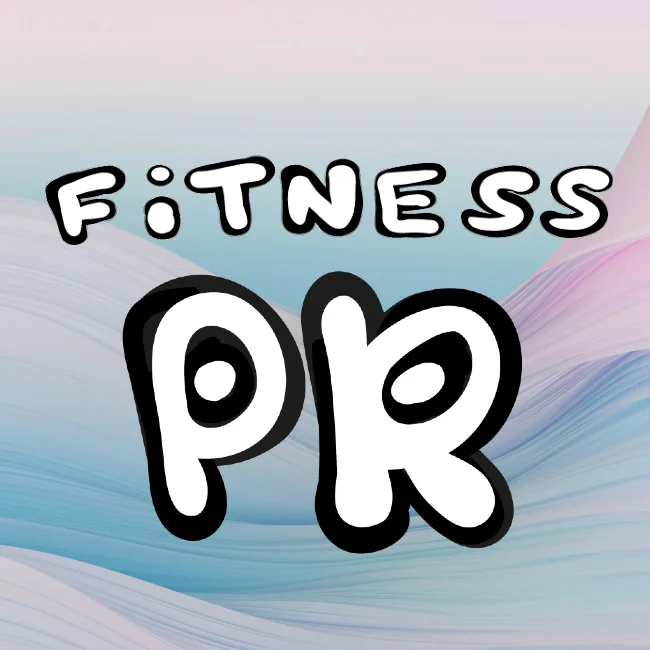Jesse Browne • April 12, 2025
PR Advice on Fitness Trends: Tailored Fitness and Wellness Plans

Author: Jesse Browne
Jesse is studying Public Relations and Advertising, with a background in media relations, integrated marketing communication and crisis management. At PR ON THE GO he's engaging and developing strategies in the creative advertising and fitness space, while leveraging his research skills and a data-driven approach to create and deliver impactful results across other diverse industries.
With advances in fitness technology, plans can be made to fit not only our bodies, but also our genetics and lifestyles. Personalized fitness plans are the future of fitness, wellness and health.
I asked our PR and growth experts to advise our fitness business owners on how to best incorporate personalized fitness and wellness plans into their programs.
Here is the insight from our experts.
- Plan for personalization as a new element
- Onboarding through technology-driven assessment
- DNA testing kits are a game-changer
- Personalization as a movement
- Start with data from wearables
- Build bridges with health professionals
- Create plans that are in sync with your customers' lives
Plan for personalization as a new element
Emily Reynolds-Bergh, Owner at R Public Relations
"Generally speaking, personalized services is a trend that’s on the rise. Consumers don’t want one-size-fits-all solutions; they are looking to get results, and personalization just might be the answer. When incorporating personalized services into your business, be sure to charge accordingly–it will take you extra time and effort to develop the plans. Also, be sure to clearly communicate what your clients will receive. Even if you can’t share specifics, giving them an idea of what to expect will help close the deal."
Onboarding through technology-driven assessment
Danilo Coviello, Founding Partner at Espresso Translations
"Gyms need to start by becoming digital with client onboarding through smart assessment software that ingests not just physical information but also sleep, stress, eating habits, and recovery capacity. My clients using holistic digital onboarding systems had 52% higher rates of adherence than those on paper-based systems.
Strategic technology utilization is required, but it does not necessarily require massive spending. Start with cost-effective wearable integration. My mid-market fitness club clients saw that applying members' existing wearable data to programmatic decision-making increased exit survey-measured perceived value by 61%.
The best personalization approach is technology combined with a genuine human touch. When we trained employees at a gym chain to do monthly personalized progress reports based on data collected, client-trainer relationship scores increased 84%, and sales of personal training packages increased 37%."
DNA testing kits are a game-changer
Jasmine Charbonier, Content Marketing Strategist
"From my experience working with over 30 fitness centers, DNA testing kits are a game-changer. One of my clients partners with 23andMe — they analyze genetic markers for everything from muscle composition to injury risk. It's fascinating stuff. Their clients love seeing the science behind their personalized programs.
Wearable integration is huge too. I recently set up a program where trainers get real-time data from clients' fitness trackers. They can adjust workouts on the fly based on sleep quality, recovery metrics, & stress levels. The results have been incredible — about 40% better adherence to programs.
Based on my experience running multiple facilities, precision nutrition certification is non-negotiable. I also make sure my trainers complete genetic testing interpretation courses — DNA Fit offers a good one. You need staff who can translate complex data into actionable programs.
Beyond certifications, I've found that practical experience with data analysis tools is crucial. I created an internal training program focused on using assessment software and tracking metrics. This investment in staff education pays off big time in client results.
Remember, the future of fitness is all about personalization. But it's not just about having the right tech — it's about creating systems that deliver truly individualized experiences at scale. That's where the real opportunity lies."
Personalization as a movement
Deepak Shukla, CEO at Pearl Lemon
"Personalized fitness plans aren't just transforming how people train. They’re reshaping how fitness brands tell their stories. We’ve worked with clients in wellness and niche services who’ve seen real traction by framing personalization not as a feature but as a movement. When a brand can connect fitness plans to lifestyle, identity, or even values, the messaging feels magnetic, and that’s what earns attention in the media.
PR shouldn’t just highlight their tech or custom plans for fitness businesses. It should tap into what makes their approach emotionally resonant, like how their services support busy parents, neurodiverse clients, or recovery-focused athletes. That’s where personalization becomes part of a larger story, not just a product. Brands that miss this angle often end up sounding generic, no matter how advanced their offer is."

Pitch your brand to 500+ fitness journalists. PR ON THE GO provides an Excel spreadsheet of over 500 fitness journalists, wellness editors, and fitness content creators.
Get the PR ON THE GO Global Fitness Media List hereStart with data from wearables
Borets Stamenov, Co-Founder & CEO at SeekFast
"Start with data you already have—sleep, heart rate, and activity from wearables. Most clients won’t do DNA tests, but they will wear a watch. Use that to auto-adjust intensity, recovery days, and even nutrition advice. Don’t just show metrics—act on them.
Build tiered plans. Basic: synced wearable + adaptive workouts. Pro: integrate food tracking, stress levels, and lifestyle surveys. Make it feel like a coach who knows them, not a preset calendar.
Lastly, focus on behavior loops. Personalization isn’t just genetics—it’s how people react. If a client skips 2 leg days in a row, don’t nag. Shift to shorter, easier sessions until they reengage. Smart tech doesn’t just track bodies—it adapts to humans."
Build bridges with health professionals
Sean Ormond, Owner at Atlas Pain Specialists
"I’m a pain management doctor, and I’ve spent years helping people work through chronic pain, injuries, and physical setbacks. One thing I see all the time? Fitness plans that don’t fit the person. They’re too generic, too intense, or simply not designed with real-life challenges in mind—whether that’s back pain, arthritis, or just juggling a busy schedule.
That’s why I’m excited about where the fitness industry is heading. Thanks to advances in technology and data, we now have the tools to design fitness and wellness programs that are truly personalized—not just based on goals like “lose weight” or “build strength,” but built around someone’s actual body, lifestyle, and even their genetics.
Instead of just asking about fitness goals, take a health questionnaire. Even basic assessments go a long way in building trust and creating a safer, more effective plan.
Partnering with doctors, physical therapists, or pain specialists can add huge value to your offerings. It helps you better support clients recovering from injuries, dealing with chronic pain, or managing health conditions. Plus, it opens the door for referrals and adds a layer of professional credibility to your brand.
Wearables like Apple Watch, WHOOP, or Garmin are full of valuable data—sleep, heart rate, recovery, stress. With the right tools, you can use this data to fine-tune workouts, adjust rest days, or even shift a client’s focus depending on their stress or recovery levels. It’s like having a real-time feedback loop to keep clients on track and safe.
If you’re in the business of helping people feel better, move better, and live better—make it personal."
Create plans that are in sync with your customers' lives
Spencer Romenco, Chief Growth Strategist at Growth Spurt
"For me, it is important to plan things that fit with how you live. Think about your daily schedule at work, how stressed you are, and how you normally get to work. Give people who are busy many ways to stay fit, like short workouts they can do at home, virtual classes, and exercises they can do at their job.
Making plans that are based on living is important to me because I know that exercise doesn't work for everyone. Instead, I believe it should be something that everyone does every day. I thought about the difficulties most people face, like having full work plans or long commutes, which make it tough to work out regularly. That is why I presented versatile alternatives, such as brief workouts that you can accomplish at home or online sessions, which can adapt to all types of schedules and locations and help make physical activity more accessible to reach and maintain."
#PRontheGO
Subscribe to the PR ON THE GO newsletter.
Receive the latest media news in your inbox. Discover journalists and start pitching!